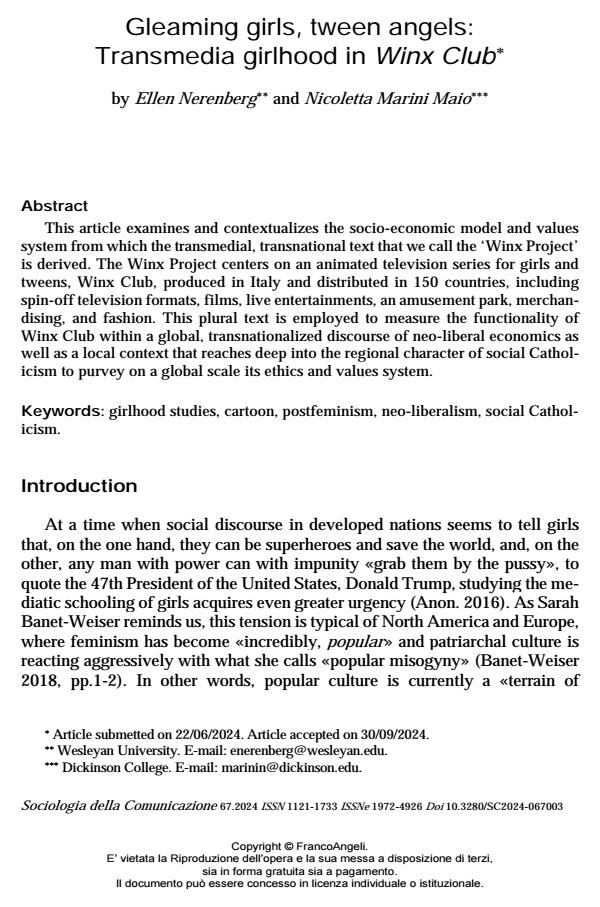Gleaming girls, tween angels: Transmedia girlhood in Winx Club
Titolo Rivista SOCIOLOGIA DELLA COMUNICAZIONE
Autori/Curatori Ellen Nerenberg, Nicoletta Marini Maio
Anno di pubblicazione 2025 Fascicolo 2024/67
Lingua Inglese Numero pagine 22 P. 43-64 Dimensione file 379 KB
DOI 10.3280/SC2024-067003
Il DOI è il codice a barre della proprietà intellettuale: per saperne di più
clicca qui
Qui sotto puoi vedere in anteprima la prima pagina di questo articolo.
Se questo articolo ti interessa, lo puoi acquistare (e scaricare in formato pdf) seguendo le facili indicazioni per acquistare il download credit. Acquista Download Credits per scaricare questo Articolo in formato PDF

FrancoAngeli è membro della Publishers International Linking Association, Inc (PILA)associazione indipendente e non profit per facilitare (attraverso i servizi tecnologici implementati da CrossRef.org) l’accesso degli studiosi ai contenuti digitali nelle pubblicazioni professionali e scientifiche
This article examines and contextualizes the socio-economic model and values system from which the transmedial, transnational text that we call the ‘Winx Project’ is derived. The Winx Project centers on an animated television series for girls and tweens, Winx Club, produced in Italy and distributed in 150 countries, including spin-off television formats, films, live entertainments, an amusement park, merchandising, and fashion. This plural text is employed to measure the functionality of Winx Club within a global, transnationalized discourse of neo-liberal economics as well as a local context that reaches deep into the regional character of social Catholicism to purvey on a global scale its ethics and values system.
Parole chiave:girlhood studies, cartoon, postfeminism, neo-liberalism, social Catholicism.
Ellen Nerenberg, Nicoletta Marini Maio, Gleaming girls, tween angels: Transmedia girlhood in Winx Club in "SOCIOLOGIA DELLA COMUNICAZIONE " 67/2024, pp 43-64, DOI: 10.3280/SC2024-067003